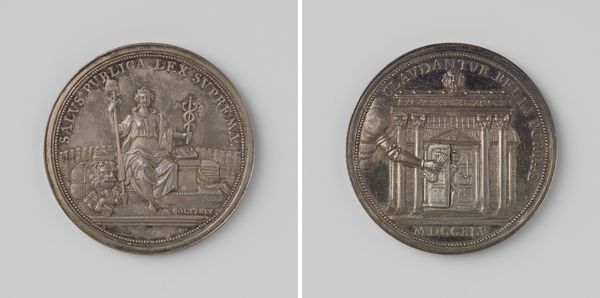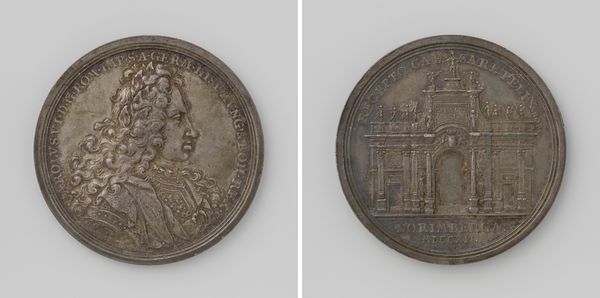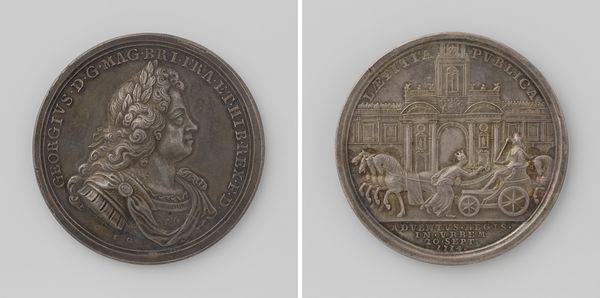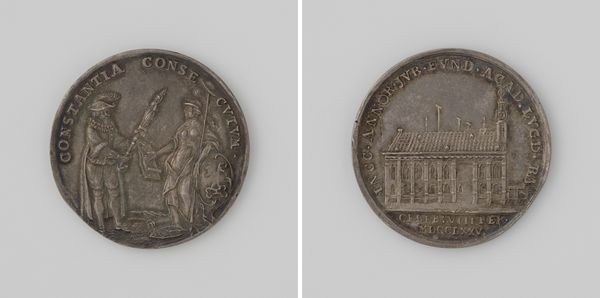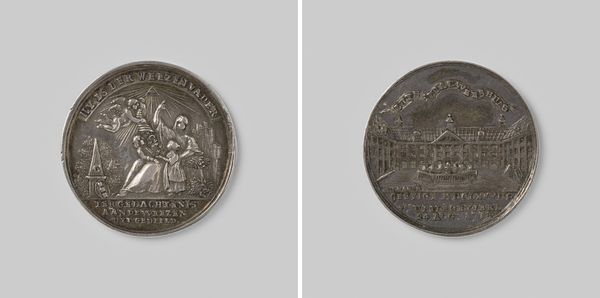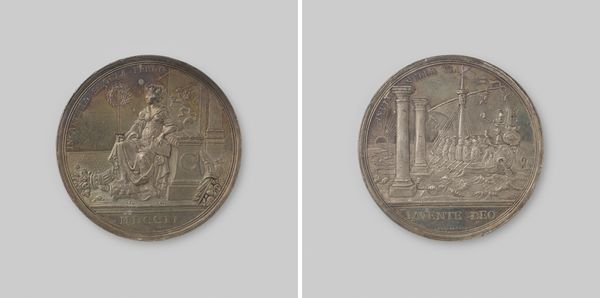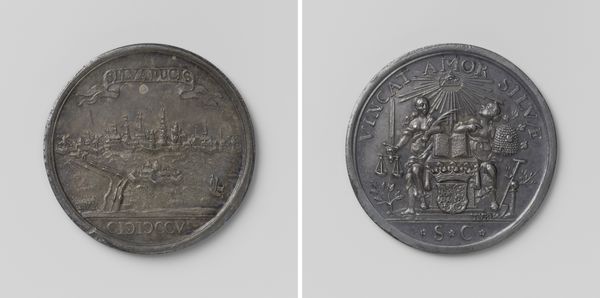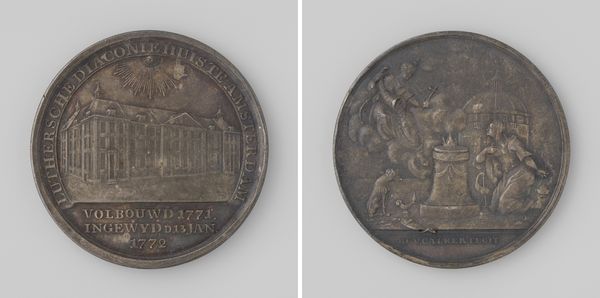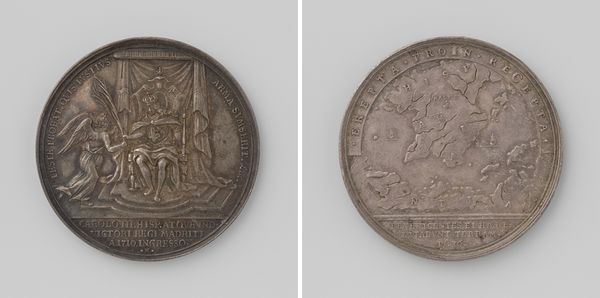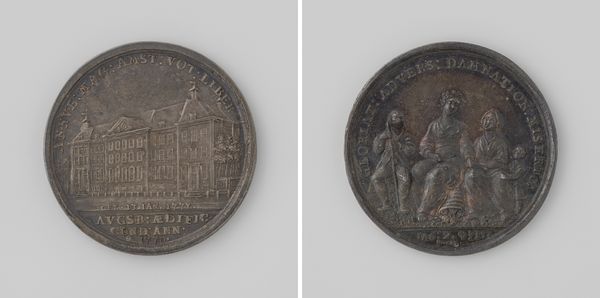
metal, relief, sculpture
#
portrait
#
baroque
#
metal
#
stone
#
sculpture
#
relief
#
sculpture
#
statue
Dimensions: diameter 4.4 cm, weight 30.15 gr
Copyright: Rijks Museum: Open Domain
Editor: This metal relief sculpture, "Intocht van Karel VI te Neurenberg" made in 1712 by Philipp Heinrich Müller, depicts two scenes on either side of what looks like a coin or medal. It’s quite striking! One side features a classical figure, and the other seems to show a grand building. How do you interpret this work? Curator: It's fascinating, isn’t it? Looking through the lens of power and representation in the Baroque period, this relief, very likely a commemorative coin or medal, operates as propaganda. Think about Charles VI, the Holy Roman Emperor, whose image and authority are being carefully crafted here. Why choose a classical, even mythological, image of strength on one side? How does that narrative play against the backdrop of the city of Nuremberg depicted on the opposite side? Editor: So, you're suggesting it’s not just a portrait but a calculated image designed to project strength and legitimacy? Curator: Exactly! The use of classical figures links Charles VI to the legacy of Roman emperors, suggesting a continuation of power and divine right. Then you have the architectural rendering on the other side, the triumphal arch. Nuremberg is presenting itself as worthy of imperial favor, invested in the power structures of the empire. And the material itself, metal, evokes lasting legacy and status. Who benefits from these visual assertions of imperial strength and stability, and whose narratives are erased in the process? Editor: That’s a really interesting point. I hadn't considered how actively the city itself would be involved in constructing that image of imperial authority. This medal then becomes part of a dialogue between the emperor and the city of Nuremberg. It also shifts my thinking of artworks like this – not just celebrating power but solidifying and perpetuating it. Curator: Precisely! By analyzing these symbols of power, we start to unpack the narratives they present and how they reinforce existing hierarchies. Considering gender, race, class–these visuals become powerful tools, with enduring implications.
Comments
No comments
Be the first to comment and join the conversation on the ultimate creative platform.

